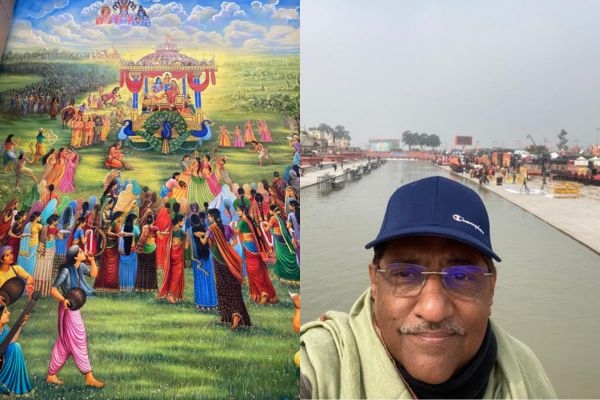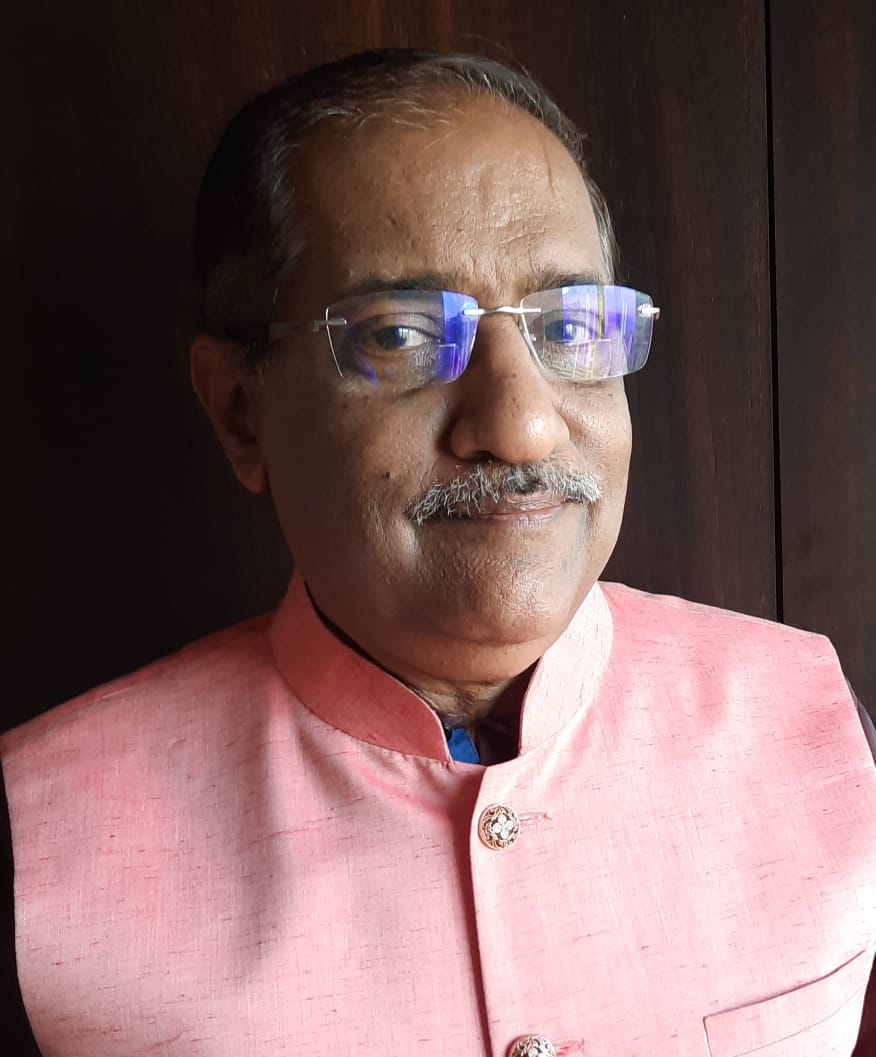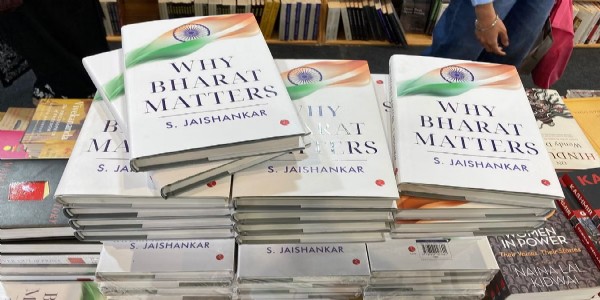Revisiting Ramayan’s Ayodhya
It was sheer luck or I had accumulated some punya that I found myself in Ayodhya from 19th Jan to 23rd of Jan in CE 2024. I almost disbelieved my ears when I received a call from NDTV team two weeks back to join them during this historic period. When I was sure it was not a hoax, I immediately said ‘yes’. But I dare not tell anyone till I got my tickets in hand. I may sound silly today, but I don’t believe in miracles.
Total Views | 424

It was sheer luck or I had accumulated some punya that I found myself in Ayodhya from 19th Jan to 23rd of Jan in CE 2024. I almost disbelieved my ears when I received a call from NDTV team two weeks back to join them during this historic period. When I was sure it was not a hoax, I immediately said ‘yes’. But I dare not tell anyone till I got my tickets in hand. I may sound silly today, but I don’t believe in miracles.
Isn’t it a a miracle that you are one of the few thousand of lucky people who would be in Ayodhya during the heady days of pran pratishtha of new Ram Mandir! A lot has been said and written about the significance of 22 Jan, as the day when Bharat reconnected to its roots. A day that rejected west and left fed narrative about India and embraced its own culture and wisdom; the day India became Bharat. So, I will speak about the blissful four days I lived in Ayodhya – a city decimated by invaders, sidelined by British and later Indian rulers. So much so, that a twin city called Faizabad was developed into a much bigger city and district HQ, while Ayodhya became a decrepit town, most of Indians not even knowing its exact location. I had visited it 10 years back and felt deeply saddened, looking at dirty small lanes and shameful condition that Ram Lalla lived in under a tattered tent.
_202401241303109349_H@@IGHT_400_W@@IDTH_600.jpg)
Despite watching the development of Ayodhya on TV, nothing prepares you for the transformation of this ancient holy seat of Kingdom of Raja Dashrath and his son the model king Raja Ram. The four lane main road from highway to the iconic Lata Mangeshkar Chowk that hosts the huge Sitar has huge wide walkways with beautiful large murals depicting different incidents of Ramayan. You meet hundreds of teerth yatris (pilgrims) carrying saffron flags with Hanuman’s image and chanting “Jai Shri Ram.” You watch groups of pilgrims singing bhajans and people taking selfies. Everybody is smiling and laughing.
Another 500 meters further down the road, you reach clean wide spaces (presently occupied by umpteen TV channels) and river Sarayu, rather its channel, flowing gently between two clean wide ghats in the backdrop of historic temples lit up by brilliant lights. All along the route public address system is playing Ram bhajans. Suddenly the backdrop is lit up by brilliant dancing laser beams with beautiful throbbing bhajans. As they complete their dance, you watch short crisp,Ram Leela on a huge projection screen. There are hawkers selling tea and simple snacks at very reasonable prices, happily earning more money than they had ever made. It’s festive mood, a Ram Utsav, with fervent devotion in the air. It’s an uplifting and spiritual experience.
_202401241303534854_H@@IGHT_400_W@@IDTH_600.jpg)
Next day, we walk down Ram Path, the central avenue of the old sacred Ayodhya city. You are taken aback by the unimaginable transformation! Four lane road. All shops painted in same gentle cream shade, with uniform name boards, clean roads, walkable though, sometimes, smaller footpaths. There are floral and electrical decorations decorations all along. There are groups performing dances on small stages built on footpaths. The road to sacred historic Hanuman Garhi, is a broad walk way with neat clean shops, atleast four times the earlier narrow dirty lane. We visit the historic Karsevak Puram, next to historic Maniram Chhavani. Both these centres along with Hanuman Garhi were the major centres of Ram Janmabhoomi struggle. Karsevak Puram was the nerve centre of entire movement in Ayodhya where great leaders of the movement, like Ashok Singhal ji, Moropant Pingle and great Sants used to have meetings and gave directions. As I pass through those lanes, I cannot but recall the heroic karsevaks rushing through these lanes towards Ram Janmabhoomi unmindful of the grave risk, being hunted down by barbaric police on the orders of the then socialist government, beaten, killed in cold blood and arrested. When I visit holy Sarayu, I can’t but think of Karsevaks who were brutally killed by police under Mulayam Singh and cremated in mass funerals, sunk in Sarayu with sandbags tied to their bodies. I pay my tributes with gratitude to the great warriors of the Ram Janmabhoomi on this sacred soil.
In my two days of roaming by foot, I see all the well known pilgrim centres. I meet a woman skating champion who has travelled on roller skates from the city of Mahakal, Ujjain; and many pilgrims including women devotees walking from Bihar, Gujarat, Jharkhand etc. I meet a Sikh father son duo who have come on cycle from Uttarakhand. I see well heeled young boys and girls carrying flag of Ram and singing or chanting.
This is pure devotion, none of them came because BJP called them, they came because Ram Lalla (child Ram) beckoned them. By the 21st Jan evening I find thousands of pilgrims roaming the streets with happy faces.
_202401241304371140_H@@IGHT_400_W@@IDTH_600.jpg)
On the TV discussions, NDTV anchors decided to let these pilgrims from all over Bharat to speak. It was a revelation. We the supposed intellectual opinion leaders were enchanted by their poetry, their stories and their dedication. Many old karsevaks who were part of 1990 and 1992 were also there. We wished to keep listening to these devotees of Ram rather than speak!
These simple folks are the ones who have kept dharma alive in Bharat despite centuries of persecution. If only the erstwhile ruling class had understood the aatman of Bharat. How unfortunate are the fools who can’t understand this devotion. How myopic are the people who deride this devotion of simple “unwashed millions” who have broken free of scorn for being Hindu, for being Ram bhakts and being spiritual. These Sanatanis see same Eeshwar in every murti they bow to.
We have regular Akhand Ramcharitamanas recitation at our home since I was a child. I always used to wonder if Sant Tulsidas was not taking poetic liberties when he described Ayodhya and her contented happy citizens who used to chant about the glory of Bhagwan Ram and Bhagwan Shiv. He talks about musical notes wafting from their homes in praise of Prabhu Ram. He describes to us how nobody sleeps on empty stomach. But experiencing Ayodhya in these four days and absorbing its vibrations made me believe that one can indeed enjoy such bliss in a Dharmic society or Ram Rajya and he was not exaggerating. I felt I was revisiting Ayodhya of Raja Ram through a Time Machine. As I behold Ram Lalla with his divine smile in the new grand Ram Mandir, I am overwhelmed with a sense of enchantment, the tears of bliss flow and I feel sense of calm enveloping me.
Ratan Sharda
23-2-2023
Bharati Web






